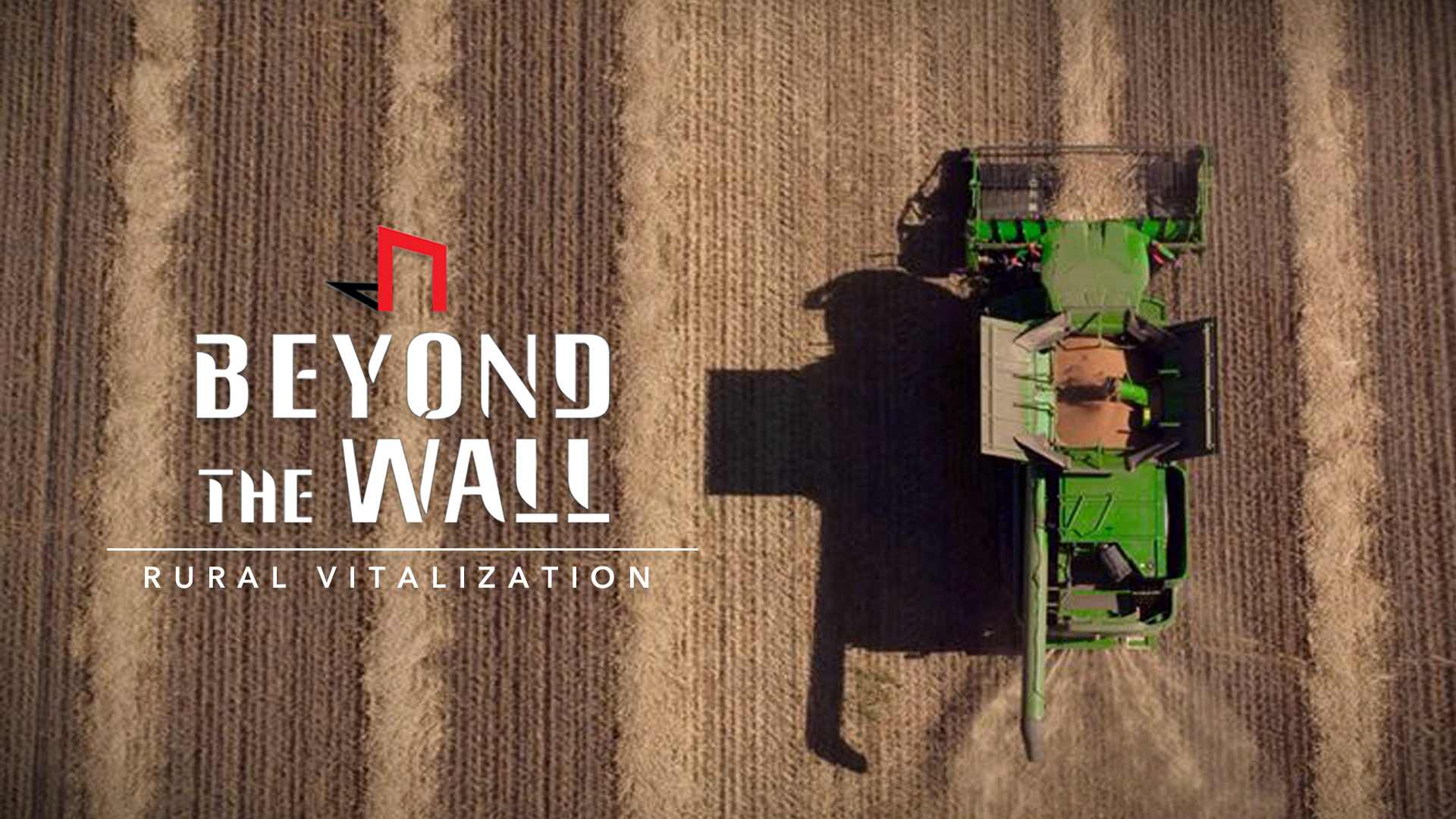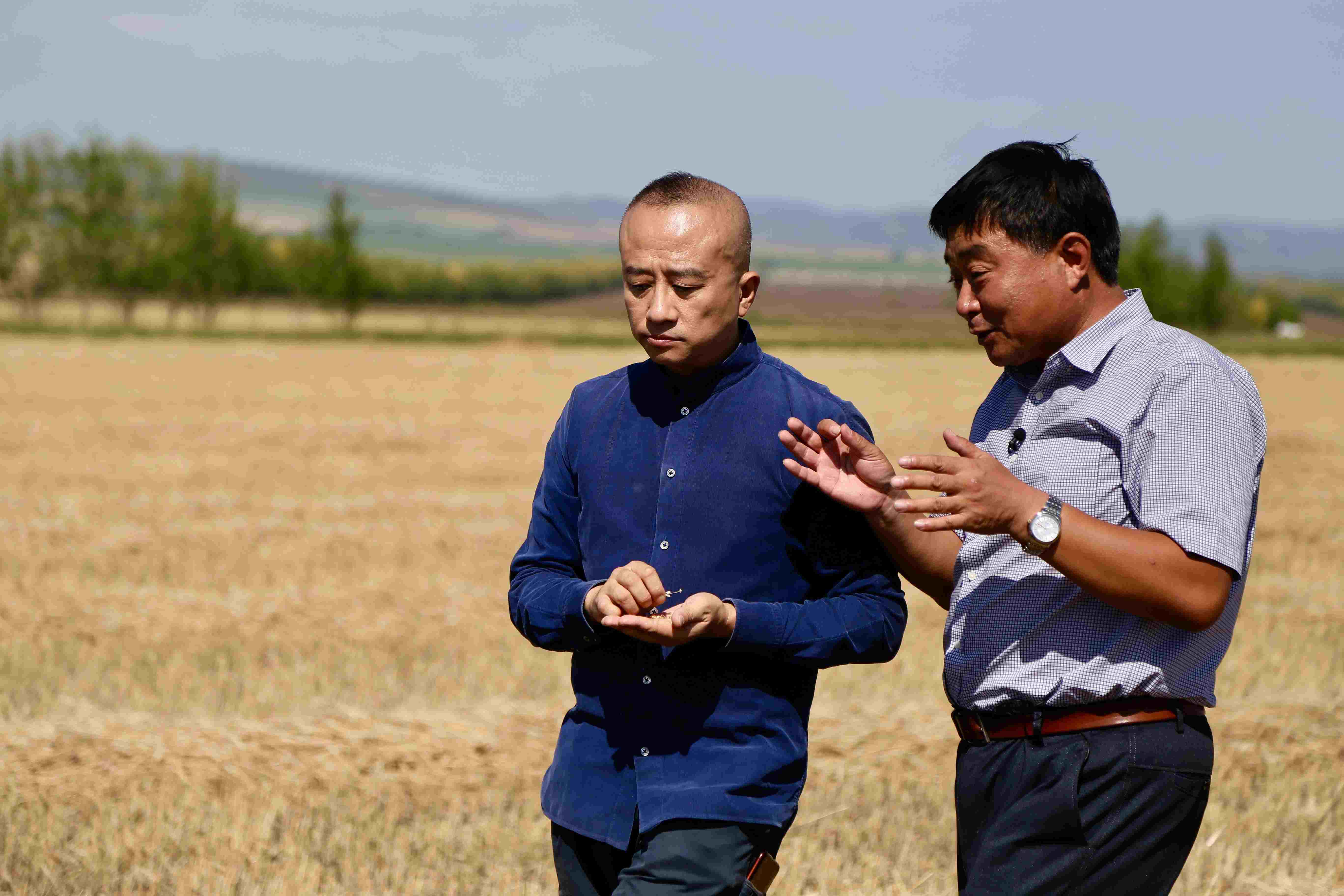
Business
14:28, 09-Sep-2018
Reporter's Diary: 'Not your father’s farm'
Updated
13:51, 12-Sep-2018
By Han Bin
04:48

Reform started from the countryside with land ownership experiments. The government understands if issues of countryside, agriculture and farmers are not handled properly, overall undertakings could suffer. In other words, rural China will be key in determining whether the next round of reforms will succeed.
China must feed 20 percent of the world's population with only seven percent of the world’s arable land. That makes agriculture key to stability, and the well-being of its people. How can China manage its resources to bring in a bountiful harvest, has always been a top concern of the government. People have high hopes for change.

Farmer Li Jie (L) and his son Li Yanhai on their farmland. Li Yanhai is one of the few university graduates who wants to come back to do the farm work in the village. /CGTN Photo
Farmer Li Jie (L) and his son Li Yanhai on their farmland. Li Yanhai is one of the few university graduates who wants to come back to do the farm work in the village. /CGTN Photo
Li Yanhai, a farmer from Qianjin Village, said: “For a long time, land has limited farmers’ minds. They only think about how to grow crops. But yields won't increase any more. The next step we need to consider is how to increase land's added value and raise farmers' income.”
Han Xudong, general manager of Shangkuli Farm in Inner Mongolia Autonomous Region, said: “We need to manage our farms as an enterprise, to spur workers’ enthusiasm, to introduce modern enterprise management, and create the highest value with the fewest people.”
Land is farmer's 'rice bowl'
Forty years on, land is still one of the most sensitive and crucial parts of reforms. It’s a farmer’s “rice bowl.” But Chinese farmers can’t sell or transfer usage rights to that rice bowl, as the urban-rural wealth gap continues to widen. The land price is not set by the market, resulting in a number of farmers' petitions or even extreme group events.
“If rural land can be further transferred, in a system linked to the urban real estate market, we can then turn the rural idle resources into real capital,” said Han Xudong, general manager of Shangkuli Farm.
"We hope to strengthen rural land transfer to create more family farms and cooperatives," said Li Yanhai, a farmer from Qianjin village.
China has been carrying out land reforms for decades. Though steady progress has been made, many experts are advocating for a more decisive role for the market in allocating land resources. They believe that’s the best way to end rural poverty.

Han Xudong (R), general manager of Shangkuli Farm, Inner Mongolia, shows CGTN reporter Han Bin a high-protein wheat they have planted following the market price. Shangkuli Farm is a major grain producing farm in northern China. /CGTN photo by Lan Hao
Han Xudong (R), general manager of Shangkuli Farm, Inner Mongolia, shows CGTN reporter Han Bin a high-protein wheat they have planted following the market price. Shangkuli Farm is a major grain producing farm in northern China. /CGTN photo by Lan Hao
Rural revitalization
The government wants to vitalize the countryside. It backs large-scale mechanized farming to raise production and income. This strategy aims to build a “strong agriculture and full realization of farmers’ wealth” by 2050. But to vitalize the vast countryside is a long-term challenge.
Forty years on, the countryside is still lagging far behind. Farmers left their land for the big cities, and farming in China remains inefficient. The rural vitalization strategy provides new hope for the young farmers dreaming of no differences between rural and urban areas. Until that day comes, the growth of large farms is likely to remain slow, and the urban-rural wealth gap may continue to widen.

A combine harvester working at Shangkuli Farm, Inner Mongolia. /CGTN Photo
A combine harvester working at Shangkuli Farm, Inner Mongolia. /CGTN Photo

SITEMAP
Copyright © 2018 CGTN. Beijing ICP prepared NO.16065310-3
Copyright © 2018 CGTN. Beijing ICP prepared NO.16065310-3